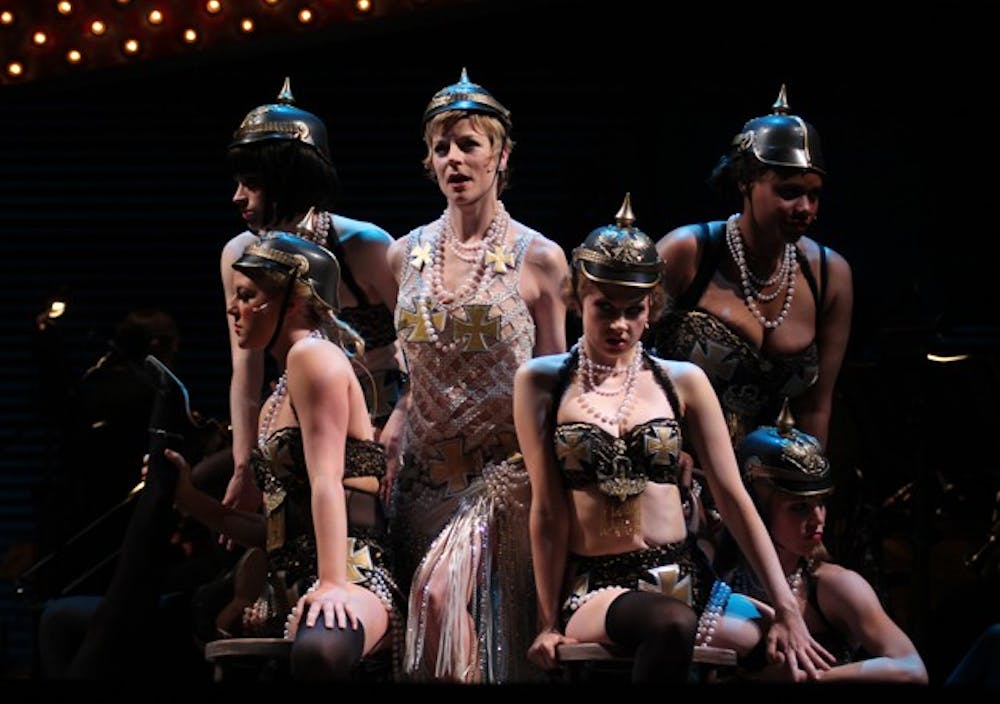In the pitch black Paul Green Theatre, a single spotlight shines on the deranged face of the Kit Kat Klub’s Emcee, portrayed by Obie Award-winner Taylor Mac.
After bidding the audience “Willkommen” to the seedy dive, the Emcee introduces the scantily clad girls and boys of the cabaret.
He then offers up the beautiful Sally Bowles, played by Lisa Brescia, to the audience, urging them to return her after they’re done with her.
Brescia, burdened with Liza Minnelli’s memorable portrayal of Bowles, shines in the role with her booming-yet-polished vocals — not to mention her sparkly flapper dress.
Bowles’ romantic counterpart, American novelist Cliff Bradshaw, played by John Dreher, remains suave even when submerged in the destructive cabaret culture.
The real show-stopper, however, is Mac’s Emcee.
Mac appears to lose himself in the role, completely surrendering himself to the level of character acting required for such a ridiculous role.
Every single facial expression, syllable and motion is over-stressed, creating a farcical and memorable character.
Accompanying the spot-on acting is the intricate and genius stage design by Marion Williams, the show’s scenic designer.



